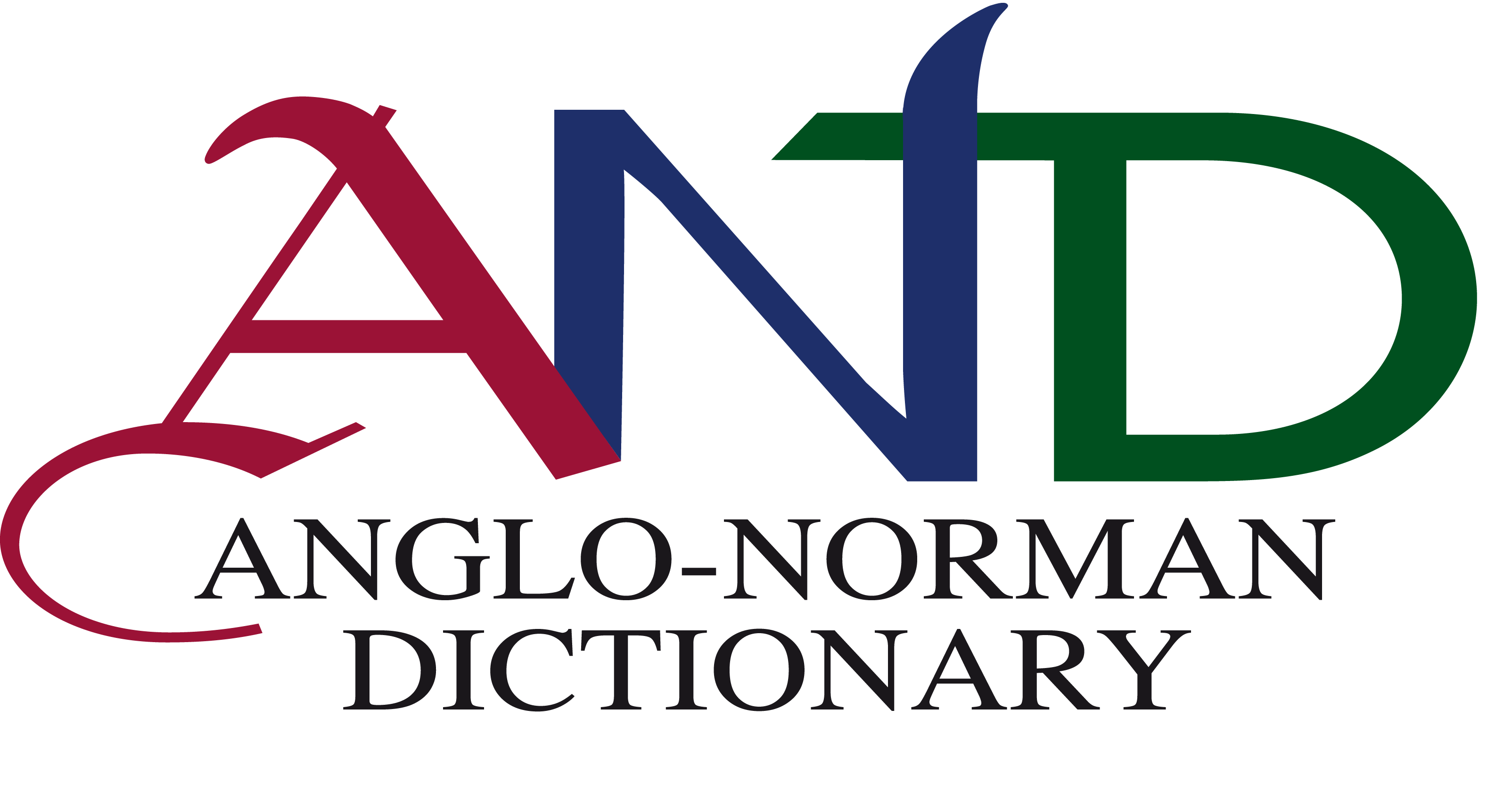AND site update: interface and layout
In the new updated version of the AND site (www.anglo-norman.net), there are now various ways of adjusting the way an entry is displayed and, to a certain extent, to customize the dictionary’s interface.
- Font size. You can enlarge or reduce the font size of displayed entries using the A+ and A- buttons on the button bar near the top of the screen.
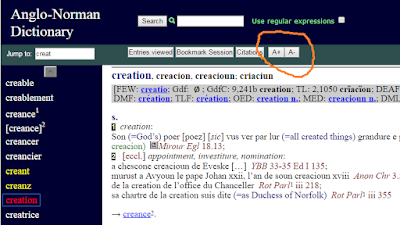
- Hide citations. You can hide or reveal the citations in a displayed entry using the ‘[SHOW/HIDE] Citations’ button, also on the button bar. Particularly in longer entries, this option may be useful to get a quick overview of the full semantic range of a word.
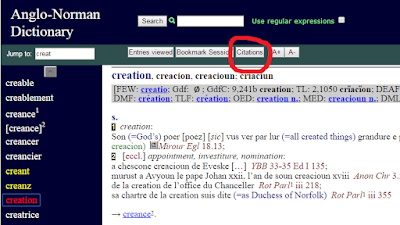
It has to be noted that unlike the ‘sense boxes’ already available for a while in longer entries, this new feature includes a) all of the semantic tags and b) all locutions and their senses.
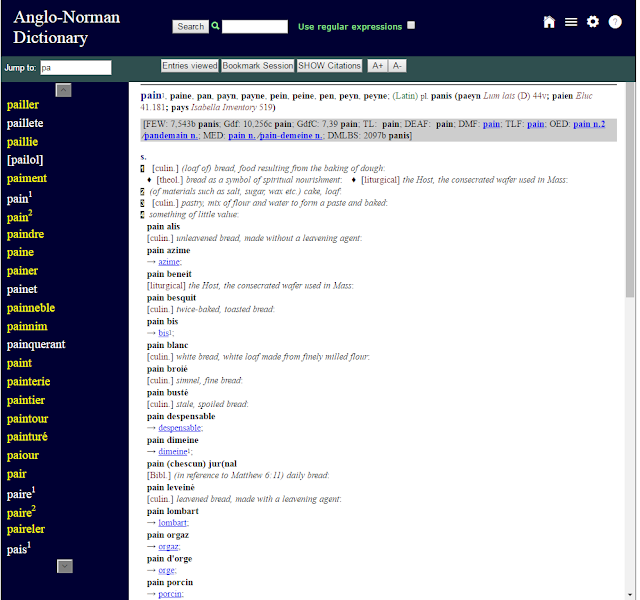
- Display layout. Using the “gear wheel” setting icon at the top of the screen you can choose between three display layouts for the entry: “Compact”, roughly equivalent to the previous standard layout, or “Normal” or “Expanded” which add progressively more white space and line-breaks between entry components. These layout settings “stick” for the remainder of your session unless you choose to change them.
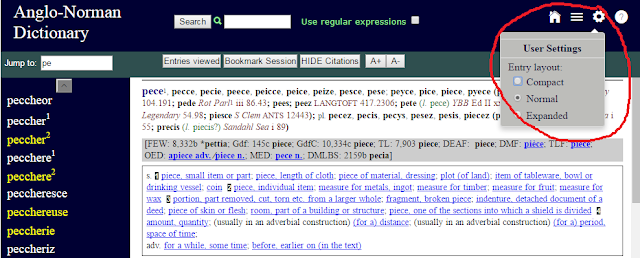
Older features remain active and may be worth reminding of:
- Expand the reference. If you click or tap on any reference siglum following a citation, bibliographical information for that siglum will appear in a small window of its own.
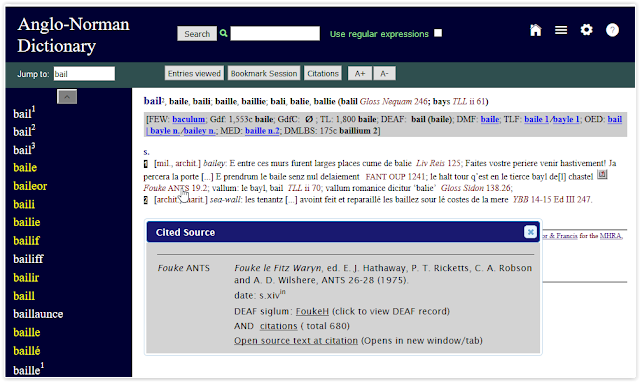
- Look up any word in any citation. If you double-click on any Anglo-Norman form within a citation, the server will send back, in an overlaid window, the results of looking up the form you have double-clicked on in the Dictionary, followed by a list of all the citations in which that form occurs. (This feature does not work on tablets or touchscreen devices.)
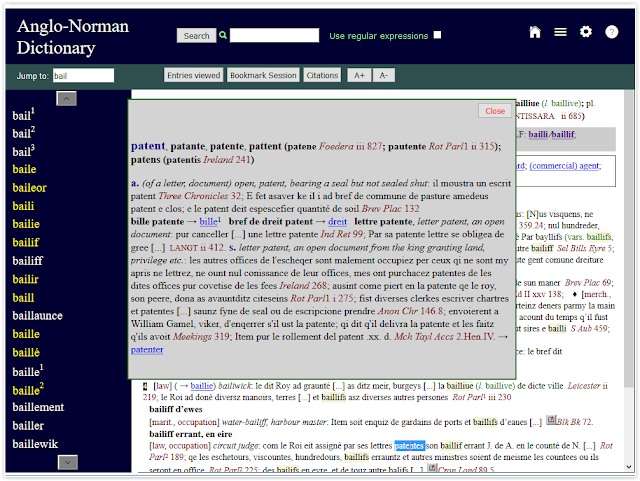
- Get a list of consulted entries. The server maintains a list of the entries you have consulted, either by choosing them from a pick list, or by following cross references within entry bodies, for as long as your session lasts. (Your “session” generally comes to an end when either close down your browser, or load a completely different site into the tab or window you have been using to view the AND). In the button bar near the top of the main browsing interface, you will see a link labelled “List entries visited”. Clicking this link will cause whatever wordlist you have displayed to the left of the screen to be replaced by a list of the entries you have viewed so far.
The site has been redesigned to be fully usable on Apple Ipad devices, including the Ipad Mini 2 and later. Some Android-based tablets will also give satisfactory results, but there is too much variability among Android devices to support them comprehensively. It is also not practicable within the project’s current budget to make all the features of the Dictionary usable on mobile telephones. However for occasional use to look up A-N words where no other device is available, the main browsing / searching interface (though not other portions of the site) will adapt to the dimensions of a phone-sized display, enabling the main facilities of that interface (the scrolling wordlist and the search by free-form entry).
